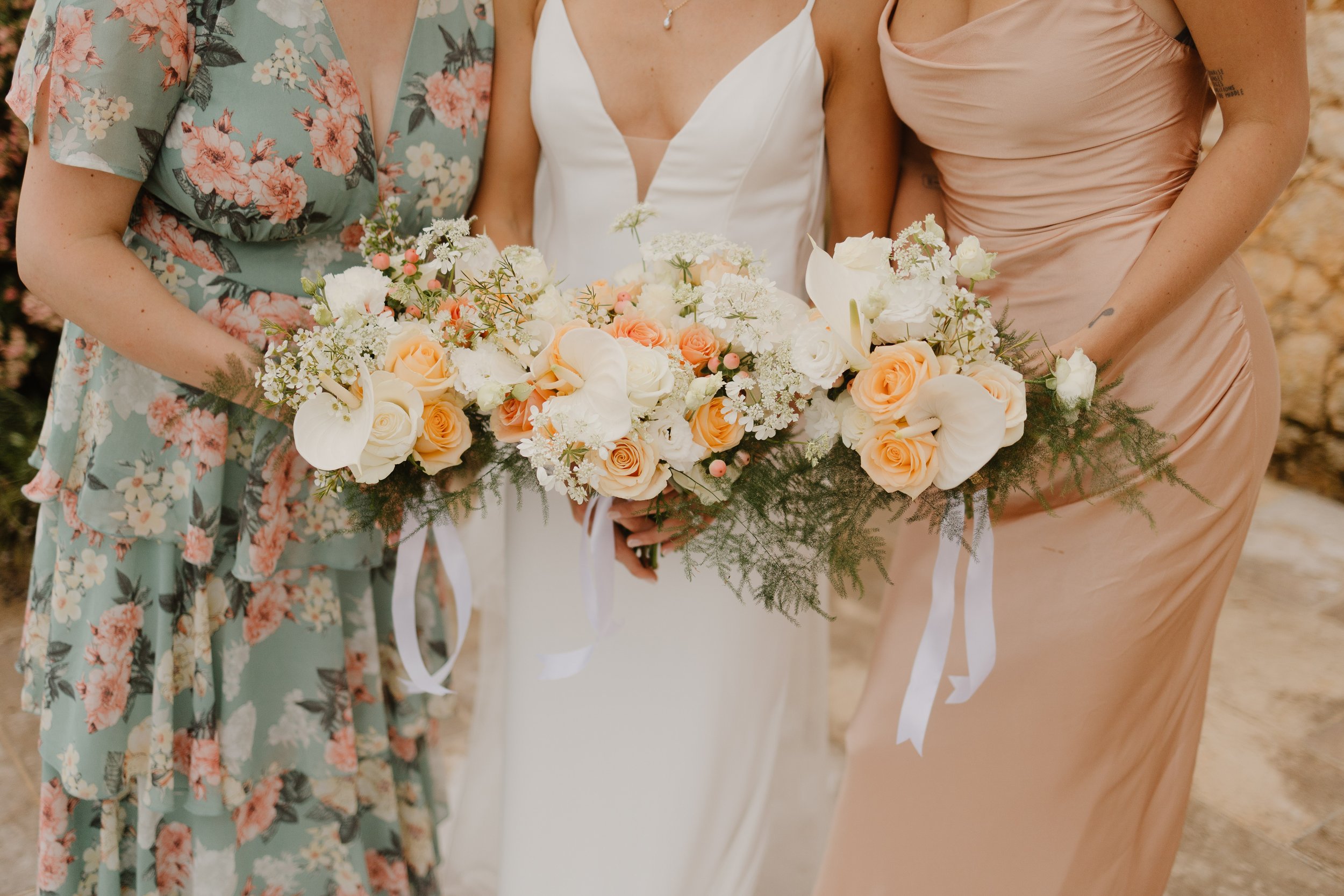The Ultimate Wedding Flower Glossary: Terms Every Bride and Groom Should Know
When planning your wedding flowers, clear communication with your florist is essential to bring your vision to life. However, the world of floral design comes with its own set of terms that may be unfamiliar. To help you feel confident and informed, I’ve created this glossary of wedding flower terms. Use this as your guide to understanding the language of blooms!
General Floral Terms
Arrangement: A collection of flowers designed in a specific style, such as centerpieces, bouquets, or altar displays.
Stem: Refers to an individual flower or greenery on its own stalk. Florists often discuss costs by stem count.
Seasonal Flowers: Blooms that are naturally available at a specific time of year. Seasonal flowers are often more affordable and fresher.
Bouquets
Hand-Tied Bouquet: A bouquet where flowers and greenery are gathered and secured with ribbon, giving a natural, garden-inspired look.
Cascade Bouquet: A bouquet with flowers that trail downward, creating a dramatic, flowing effect.
Nosegay: A small, compact bouquet, often carried by bridesmaids or used as a decorative element.
Posy: A petite, round bouquet, usually simple and elegant, popular for flower girls or bridesmaids.
Boutonniere: A small arrangement typically worn on the lapel of a groom, groomsman, or other male wedding party members. May also be called a button hole.
Centerpieces and Ceremony Décor
Centerpiece: The floral arrangement displayed on each guest table. Styles can range from low and lush to tall and dramatic.
Garland: A long, rope-like arrangement of greenery and/or flowers, often used on tables, arches, or staircases.
Floral Arch: A curved or structured frame adorned with flowers and greenery, often used as a ceremony backdrop. There are different shapes these can take also.
Aisle Markers: Small floral arrangements placed along the aisle on the chairs of the guests to enhance the walkway for the ceremony.
Altar Arrangements: Large floral displays placed at the ceremony’s focal point, such as the altar or chuppah.
Design and Style Terms
Color Palette: The range of colors used in your floral design. It could include a mix of primary, secondary, and accent tones.
Floral Foam: A material used to hold flowers in place for arrangements; often used for intricate designs. Sometimes called by the brand name “Oasis”
Organic Style: A natural, loose floral arrangement with asymmetrical designs and flowing greenery.
Modern Style: A clean, minimalist floral design with bold shapes and colors.
Texture: Refers to the mix of materials (e.g., soft petals, rough greenery) to create visual interest in an arrangement.
Types of Flowers and Greenery
Filler Flowers: Smaller blooms or greenery used to complement main flowers, like baby’s breath or wax flowers.
Focal Flowers: The standout flowers in an arrangement, such as roses, peonies, or lilies.
Greenery: Non-floral elements like eucalyptus, ferns, or ivy, used to add texture and fullness.
Spray Roses: A type of rose that blooms in clusters on a single stem.
Wedding Flower Logistics
Mock-Up: A sample arrangement created by your florist to give you an idea of how your flowers will look.
Delivery and Set-Up: Services provided by the florist to bring the flowers to your venue and arrange them on-site.
Strike/Breakdown: The removal of floral installations and arrangements after the event.
Repurposing: Using ceremony flowers again during the reception to maximize the floral budget.
Budgeting Terms
Stem Count: The total number of individual flowers and greenery used in an arrangement; impacts overall cost.
Hard Costs: Expenses related to materials, such as flowers, containers, and foam.
Labor Costs: Charges for the florist’s time and skill in designing, delivering, and setting up your arrangements and taking them down and disposing of the materials.
Planning Your Floral Vision
Knowing these terms will empower you to describe your ideas clearly and ensure you and your florist are aligned. For example, instead of saying, “I want something dramatic,” you can specify, “I’d love a cascade bouquet with bold focal flowers like roses and greenery for texture.”
Your florist is there to guide you, so don’t be afraid to ask questions or share your inspiration photos. With this glossary in hand, you’ll have the confidence to collaborate effectively and make your wedding flower dreams come true.
Ready to start planning? Reach out to someone who speaks your language—both literally and in the world of flowers!-Me!






